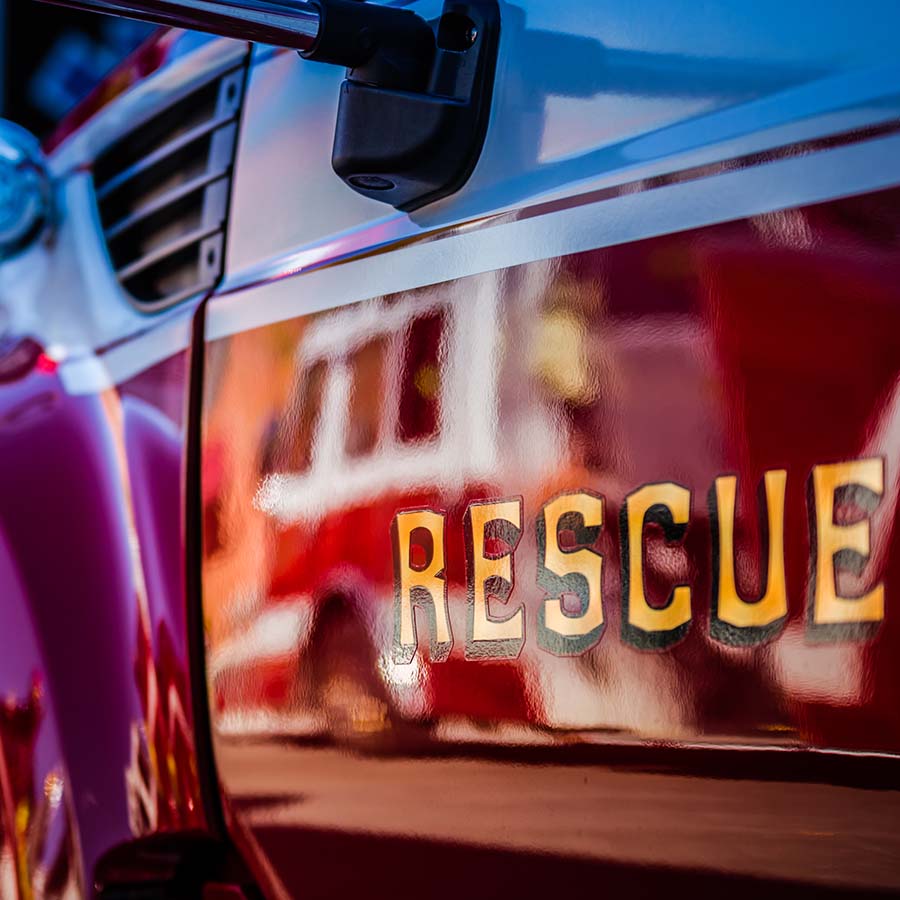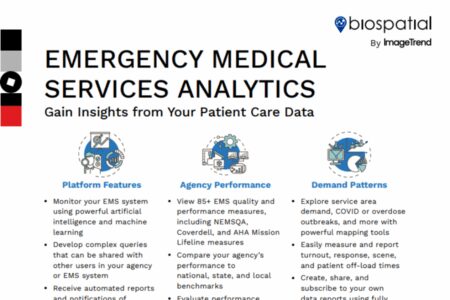Whole blood transfusion in the prehospital setting has rapidly emerged as a game-changer for improving survivability in patients experiencing massive blood loss.
With growing federal support and near real-time data systems paving the way, first responder agencies are entering a new era of prehospital care, one where timely intervention, clinical innovation, and strategic data use intersect.
Why Whole Blood, Why Now?
Research and real-world outcomes are reinforcing what many EMS leaders already suspected: whole blood saves lives. According to the Annals of Emergency Medicine, prehospital whole blood transfusion is associated with improved survival, particularly in cases of traumatic hemorrhage.
Agencies across the U.S. are beginning to implement these programs, but adoption varies based on cost, coordination, and state-level regulations. Federal agencies are now stepping in to help standardize and support these efforts. EMS.gov highlights the growing collaboration between EMS systems, blood banks, and federal partners to expand access to prehospital blood products and improve trauma care nationwide.
According to an article in SAGE Journals, prehospital transfusion can be especially important in rural areas with longer transport times, where access to definitive care is delayed. The U.S. Department of Transportation’s Safe System Approach reinforces this by emphasizing better emergency response as a pillar of its national strategy to reduce roadway fatalities.
The Federal Push: Road to Zero and National Priorities
Federal recognition of EMS readiness is playing a critical role in the evolution of prehospital care. National agencies are increasingly acknowledging that EMS is not just a responder, but a key driver of public health outcomes, innovation, and system-wide improvements.
By aligning with federal initiatives, EMS leaders can help accelerate the nationwide adoption of lifesaving strategies, like whole blood transfusion.
The National Highway Traffic Safety Administration (NHTSA) is leading the Road to Zero initiative, aiming to eliminate traffic-related deaths through safer vehicles, infrastructure, policies, and response strategies.
A key part of this initiative is supporting innovations that improve trauma survivability, like prehospital whole blood. In partnership with NHTSA and NEMSIS, ImageTrend plays a vital role in tracking and analyzing patient care data to inform national best practices.
“According to FARS data, of the 42,514 people who died in motor vehicle crashes in 2022, 42% were still alive when first responders arrived,” noted Joe Graw, Chief Growth Officer at ImageTrend. “That tells us there’s a significant opportunity to improve outcomes—and by tracking how and when we intervene, we can start changing that statistic.”
Near Real-Time Federal EMS Data for Motor Vehicle Crash Intervention
Alongside national efforts like Road to Zero, federal and state partners are also investing in near real-time data tools designed to guide field interventions. The Transportation Incident Visualization (TIV) project, a collaboration between NHTSA, NEMSIS, and ImageTrend, provides state and federal safety officials with timely, data-driven dashboards that identify high-risk areas and clinical trends in motor vehicle crashes.
By connecting crash data to patient outcomes and prehospital interventions, the TIV helps agencies pinpoint where strategies like prehospital whole blood can have the greatest impact and supports more proactive response planning across jurisdictions.
Innovation in the Field: STRAC, Drones, and Delivery Logistics
EMS systems across the country are pursuing cutting-edge strategies to reduce barriers to whole blood use through regional collaboration, portable technology, and emerging delivery models.
- STRAC (Southwest Texas Regional Advisory Council) and San Antonio Fire have built a nationally recognized prehospital whole blood program, covering 19 of 22 counties since 2018.
- Burnsville Fire Department is Minnesota’s first 911 EMS agency equipped to carry O-negative whole blood in a portable refrigerator unit, enabling on-scene transfusions for severely bleeding patients.
- Community blood centers supplied more than 32,000 blood products in 2023 for EMS transfusions and are working closely with EMS systems to ensure reliable stock, streamline resupply, and support clinical coordination.
- Emerging research into drone-based blood delivery suggests that unmanned aerial vehicles (UAVs) could be used to maintain temperature control and deliver blood to EMS teams in rural or congested areas.
Some of these programs are still experimental but show promise. The ability to deliver blood rapidly, especially in rural or hard-to-reach locations, could become a scalable national model.
“Innovation at the local level is paving the way for broader change,” explained Joe. “By highlighting what’s possible, whether it’s mobile refrigeration or drone delivery, we’re starting to see more systems rethink what prehospital care can look like.”
Tracking What Matters: Data, Interoperability, and Clinical Insight
As prehospital whole blood programs expand, EMS systems are recognizing the critical role of data in supporting clinical excellence, compliance, and coordination with hospitals. In our blog on whole blood tracking, we explored how consistent documentation and data sharing can strengthen protocols and improve patient outcomes.
The ImageTrend Platform supports EMS agencies by helping them:
- Standardize whole blood documentation in the ePCR
- Integrate with hospital systems to improve data continuity
- Analyze trends for continuous quality improvement
Together, these capabilities create a connected data environment within a single, all-in-one platform. This eliminates the need for fragmented systems and makes it easier for agencies to streamline documentation and share data across partners. It also enables leaders to act on insights in real time, helping them evaluate what works, identify gaps, and strengthen the impact of whole blood programs.
Federal Investments and the Path Forward
Federal investment in EMS innovation is gaining momentum, and while not all programs directly support whole blood initiatives today, the groundwork is being laid. From funding rural EMS capabilities to streamlining legislative pathways, national attention is shifting toward advanced prehospital care.
Programs like the SAMHSA’s Rural EMS Training Grant highlight the government’s growing support for EMS-led solutions in underserved communities, opening the door for future initiatives that could include trauma care advancements like whole blood. Meanwhile, organizations such as the IAFF are working to remove roadblocks so more departments can implement whole blood programs with confidence.
Research groups like PrehospitalTransfusion.org are also helping to shape best practices nationwide, ensuring that innovation is guided by real-world data and clinical insight.
“If we want to scale programs like prehospital whole blood nationally, we need near real-time data to show what’s working, where, and why,” said Joe.
As EMS leaders look to the future, these efforts, paired with advancements in data systems, mobile refrigeration, and potential drone delivery, are setting the stage for scalable, life-saving solutions in the field.
Want to learn more? Talk to one of our experts to explore how ImageTrend is helping agencies support data-driven prehospital care through innovation.




